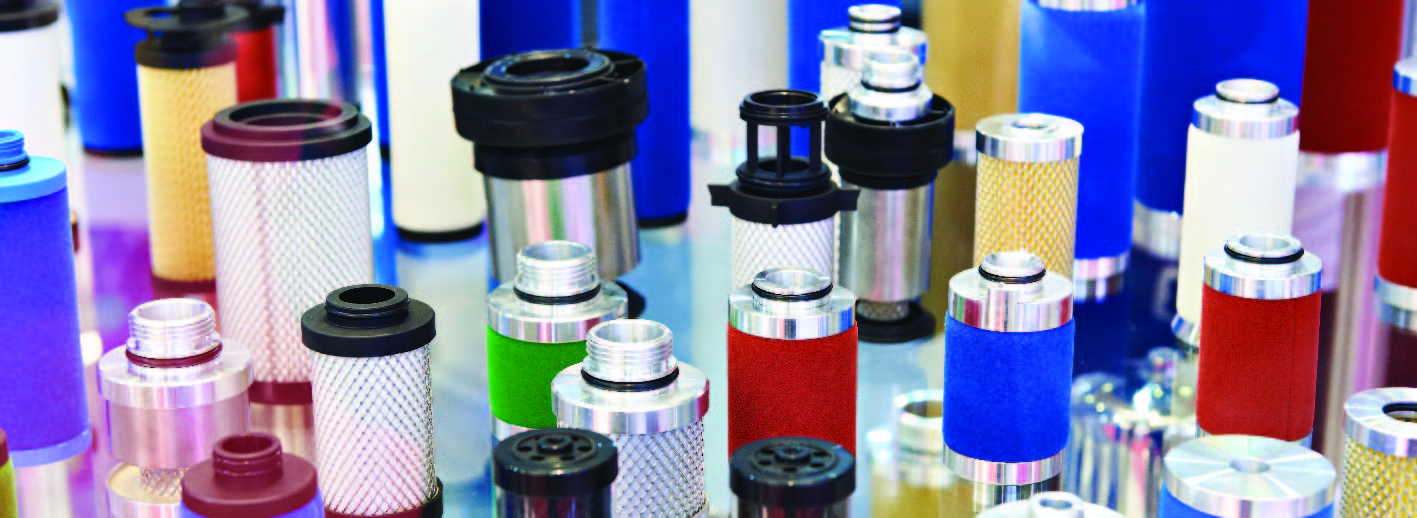If there is one thing we’ve tried to help our readers understand, it’s the importance of lubricant cleanliness. Lubricants are essential to keeping your machinery in good working condition. They help prevent unnecessary damage and maintenance downtime, but as we all know, it’s easy for lubricants to become contaminated. Contamination can happen at any time, during manufacturing, transit, and even during application to machinery. When contamination occurs, operators risk introducing foreign microscopic particles and substances into their machinery that can reduce a lubricant’s effectiveness, damage your equipment, and lead to a loss of efficiency.
Many operators perform on-site filtration with their lubricant supplies to avoid this problem. There are several different types of filtration tests and methods that can be performed, with the end goal being to remove any contaminants in fresh lubricant supplies. While on-site filtration may remove some pollutants, it can also be a risky process that may reduce the effectiveness of your lubricant supplies.
What are the risks of on-site filtration for lubricants?
Several different risks come with on-site filtration. The most obvious threat is that you may introduce other contaminants into your fresh lubricant supplies if your filtration process is not clean or effective enough. For example, suppose your filtration equipment is not properly cleaned or stored. In that case, you could introduce microscopic particles like dirt and debris back into your finished lubricant supplies during filtration. But accidentally sullying your lubricant supplies with contaminants during the filtration process isn’t the only risk. Even with the cleaned filtration systems and safest processes in place, you still risk damaging your finished lubricants during the filtration process. How? By removing essential additives.
Finished lubricant products are specifically designed with precise chemical makeup. Additives essential to the effectiveness of lubricants are a key component of these products. But many operators do not understand the exact chemical makeup of their finished lubricants. They may wrongly assume that the additives are fully dissolved in the oil when that’s typically not the case. Many additives have larger molecular sizes or varying chemical compositions, which puts them at risk of being removed during filtration. For example, if an additive’s molecular size is larger than the filtration method being used, it will be removed along with any potential contaminants. This is why sometimes, when the filtration process is done, the finished lubricant is less effective because the additive has been removed.
What additives are at risk during on-site filtration?
Various additives are at risk of being removed during the on-site filtration process. It depends on the finished lubricant’s chemical makeup, the additive’s molecular size, and the filtration method used. But typically, the damage that occurs to finished lubricants from on-site filtration affects defoamants, anti-scuff additives, and water separability. So let’s explore how this happens.
- Defoamants: These types of additives typically have a larger molecular size, so they are particularly vulnerable to stringent filtration. When these additives are removed during filtration, the lubricant’s foam tendency and stability are often affected. In an ISOCLEAN technical bulletin, Impacts of Filtration on New Lubricant Performance, several demonstrated graphs and examples of filtration tests showed reduced foam stability in the lubricant after filtration. Here’s one example we would like to share. From as far back as 1987, studies have shown that filtration can affect foam stability. T.V. Friesen pioneered these tests when he discovered that tractor hydraulic fluid that met the ASTM foam performance standards at production subsequently failed foam tests after only 50 hours of operation. His work revealed that the on-site filtration was to blame. His research has later informed further research since then, and more modern tests show similar issues.
- Water separability: Another risk of on-site filtration to your additives is water separability. This is the ability of the lubricant to shed water, and it’s essential for keeping your lubricants effective, especially in adverse working conditions where the likelihood of water contamination is high. Many finish lubricants contain demulsifier additives that help improve water separability, but these additives are at risk of being removed during filtration. For example, a 2013 article from Tribology and Lubrication Technology found that demulsifier additives were quickly removed from an unnamed finished lubricant when filtered through a 1 µm filter. While that type of filtration is uncommon, further tests showed that even larger filters could also lead to a loss of demulsifier additives.
- Anti-scuff additives: These additives are also highly susceptible to removal during filtration because they are often suspended in lubricant oil. High filtration can remove these additives, which can lower the lubricant’s effectiveness. This can lead to mechanical damage as the anti-scuff additives help prevent wear in high contact zones.
Is on-site filtration worth it?
While it may seem as if we are against on-site filtration, that is not the case. It can still be a valuable process, provided it is done right. To ensure that you will not damage your finished lubricants during the process, it’s essential that you understand the chemical makeup of your lubricants and how it may be affected by your chosen filtration method.
Another method is to choose ISOCLEAN lubricants. These products are prepared with the highest standards to ensure they are as clean as possible. Many of our customers who switch to using ISOCLEAN products immediately see a significant difference. If you’d like further details about your lubricant effectiveness and needs, we also recommend joining our oil analysis program. Through this program, we can offer personalized data on your specific lubricant needs and maintenance issues using samples from your equipment and lubricant supplies. We’ll then provide you with expert lubricant and maintenance information for your equipment. It’s an extra step of preventive maintenance that can really help keep your equipment in great working condition. To learn more, visit our website!
